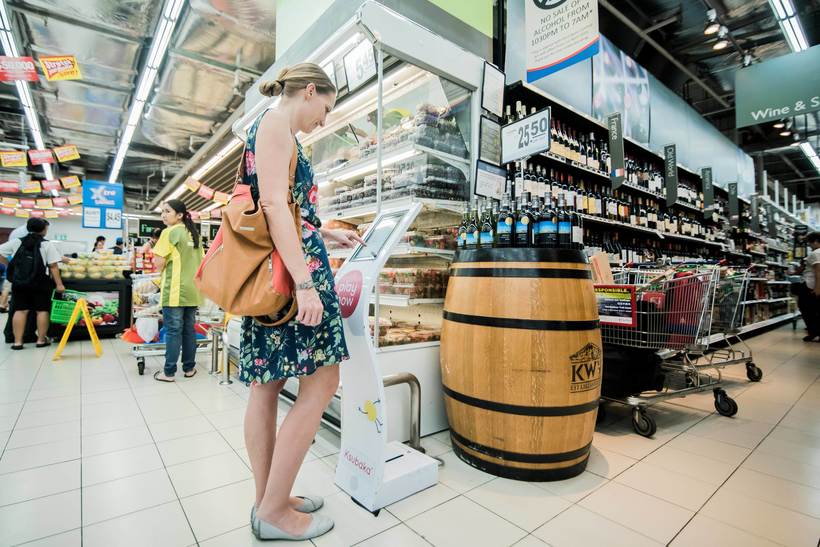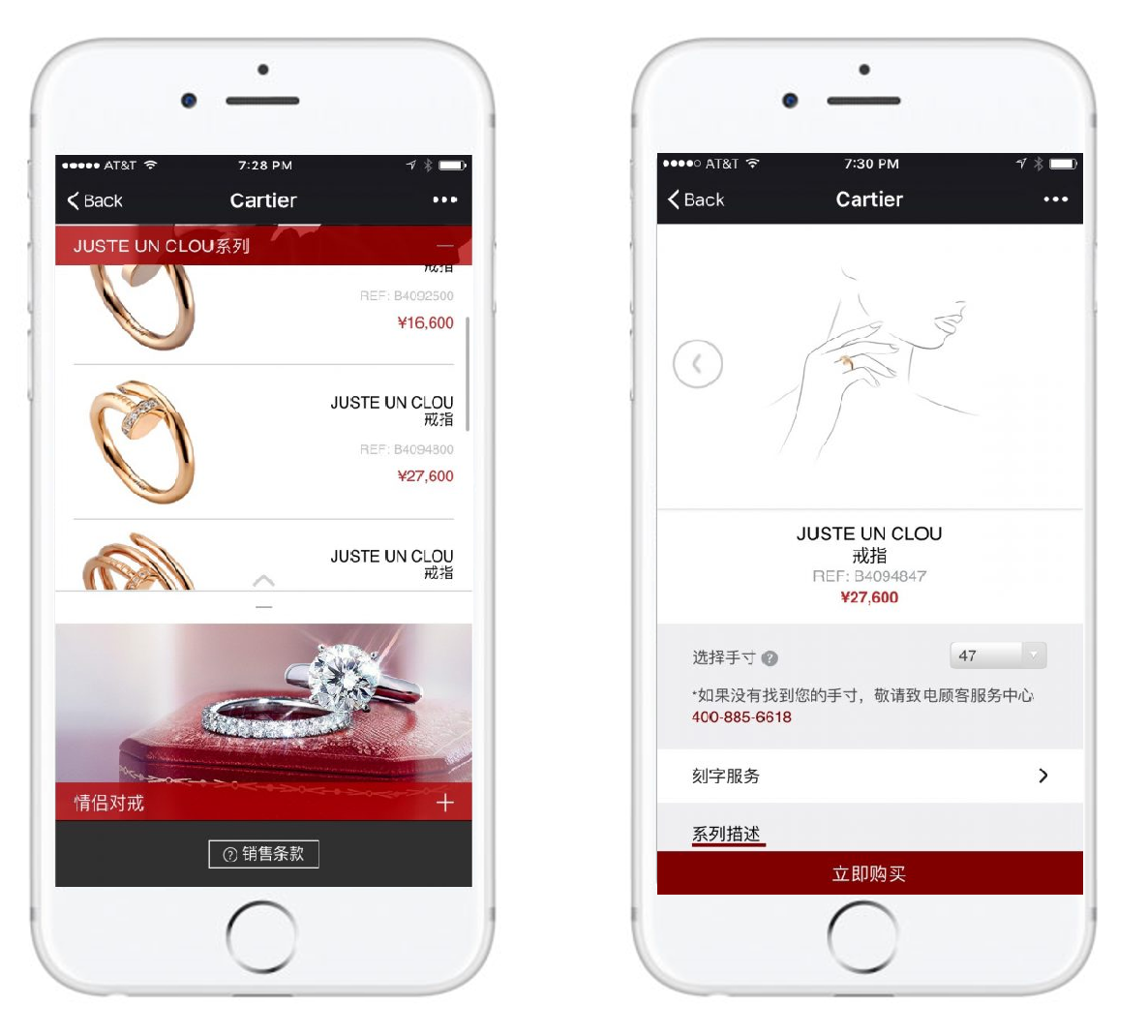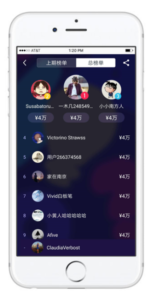Market research company Nielsen recently released a report that reveals how connected devices and digital platforms have led to a consumption boom in China. “Chinese consumers have shown an insatiable appetite to integrate digital technology into their lives. Connected devices, social media, e-commerce, online payments and digital advertising are now firmly woven into the fabric of society”, said Vishal Bali, Managing Director of Nielsen China. A statement supported by numbers showing that online sales grew 28% in 2017, and 84% of consumer used their mobile phone to shop in 2017. The report aims to help brands (better) understand Chinese consumer behavior and improve their digital marketing strategies.
Jacco
Fashion brands are quickly capturing China’s make-up market
Fashion brands venturing into cosmetics is a big hit in China, as the popularity of luxury brands’ cosmetics lines skyrocketed in 2017. Besides the fact that these luxury brands can “piggyback” on their good reputation and the “brand experience” already created by previous fashion items and marketing campaigns, the affordability of these luxury items also plays a big part in the rise of their popularity. Luxury brands’ beauty products are perceived as a good entry point to the world of luxury, as they allow Chinese consumers to enjoy a certain level of wealth and sophistication without having to spend hundreds or thousands of dollars.
How online marketers fuel China’s fake news problem
China’s wildly successful social media marketing industry is starting to show its dark side: rumourmongering. The viral potential of online content is a blessing for marketers, but a curse for companies when it concerns damaging (fake) rumours. Rumourmongers often target the food and beverage industry, education, elderly care, and charity – all institutions that lack comprehensive market oversight. And as the majority of Chinese netizens tend not to verify information before they share it online and companies knowingly distribute fake news to undercut the competition and oversell their own successes, regulations for commercial defamation are much needed.
Ecommerce giants opening offline stores
The idea is simple: a physical store that demonstrates the convenience and simplicity of online shopping. It’s the core of “New Retail” – using technology and data to merge online and offline shopping – and China’s biggest ecommerce players are investing heavily in this strategy. In China, 15 percent of retail sales are made online, which means that 85% of sales are still made offline. By moving into physical commerce and utilizing technology to enhance inventory- and customer data management, it seems that ecommerce platforms are trying to digitally transform the 85% rather than to increase the 15%. And by doing so, ecommerce giants Alibaba, JD and Tencent are transforming retail.

Let’s look at why and how China’s ecommerce giants are opening offline grocery stores and what this will mean for customer experience.
Hema – Alibaba
In March 2015, Alibaba launched its first “New Retail” supermarket that aims to replicate the online shopping experience in a brick-and-mortar store. Three years later, the ecommerce giant has 25 Hema stores in seven Chinese cities, including 14 in Shanghai, 5 in Beijing, 2 in Ningbo, and 1 in Hangzhou, Shenzhen, Suzhou, and Guiyang. And this “New Retail” strategy will keep expanding, as Alibaba plans to open 30 more Hema supermarkets in Beijing this year.
The Hema experience starts with downloading the mobile app, that automatically links to the customer’s Taobao or Alipay account. Through the app, customers can order fresh food to cook at home or have it prepared by the Hema chefs and delivered within 30 minutes – all from the comfort of their homes. Customers who prefer the in-store experience are welcome to visit the supermarket, where they can hand-select their fresh food and can choose to have it cooked for eat-in or carry-out, pay for the products at the self-checkout kiosk, or have the products delivered to their nearby home or office within 30 minutes. When using the home delivery option, shopping is simply a matter of scanning the barcode for each product and telling the app how many pieces you want delivered to your house.

In-store-online purchases are collected in shopping bags by employees. The bags
are then tagged and sent to the delivery section via ceiling mounted conveyor belts.
From there, the shopping bags are shipped out to the customers’ homes.
Besides hoping to boost online orders, rope in millions of new customers and expand its network into relatively untapped markets, the main aim of Alibaba is to create showcases that demonstrate the benefits of “New Retail” to both customers and other businesses that want to digitally transform. After all, Alibaba is a technology company that gains more by providing a platform to retailers than by directly competing with them; similar like it does with Taobao.
7Fresh – JD
Following the footsteps of one of its biggest competitors, JD opened its first tech-enabled physical store last week. Under the name 7Fresh – meaning 7 days per week fresh foods – a 4000 square foot store was opened that aims to bring a premium shopping experience to Chinese customers by blending the worlds of online and offline retail.
By empowering traditional retail with ecommerce technology, JD has managed to build an innovative supply chain and ensure efficient sourcing, storage, and logistics operations. This efficiency enables 7Fresh to unlock services and experiences that were difficult to manage in traditional retail models, such as next-level freshness. Eggs, for example, arrive instore within 12 hours of being laid by chickens, and fresh fish and seafood can be caught from the seas of Japan and delivered to the dinner table in just 24 hours. Furthermore, as with Alibaba’s Hema, customers can choose to have their purchases prepared and cooked on site, and JD offers 30-minute delivery on purchases.

7Fresh’s fish department that offers freshly-caught fish and seafood. Customers
can choose to have their purchases prepared and cooked on site.
The 7Fresh experience is similar to the Hema experience: it starts with downloading the mobile app that allows customers to scan and pay for their purchases. Customers in the neighbourhood can either take their products to go, or have them delivered to their homes within 30 minutes. However, 7Fresh differentiates itself by wanting to deliver a personal and educational shopping experience for its customers. For example, “magic mirrors” sense when customers pick up an item, and automatically provide information on a screen about its source and nutrition. In the near future, 7Fresh hopes to have small shopping carts that are able to follow customers around the store as they browse the aisles, allowing them to shop hands-free.
Through its successful ecommerce platform, JD has grown to become one of China’s biggest online grocery retailers by offering a quality customer experience online. But, unlike other markets in the world, in China premium grocery shopping experiences are mainly available online. According to JD, the traditional weakness of China’s physical store infrastructure is one of the biggest factors that drive consumers to purchase their groceries online. However, with the launch of 7Fresh and Alibaba’s Hema, this is expected to become ancient history. In fact, JD plans to open 1000 7Fresh stores over the next five years.
Yonghui – Tencent
In an attempt to challenge its biggest competitor Alibaba, Chinese Tech giant Tencent Holdings Ltd (the owner of WeChat) bought a 5 percent stake in Yonghui Superstores and a 15 percent stake in Yonghui’s supply chain and logistics subsidiary. The investment aligns Tencent further with JD, as JD is already an investor in Yonghui. Founded in 2001, Yonghui has now more than 500 supermarkets in 20 different provinces in China.

Yonghui’s Super Species store in Shenzhen, the new retail unit of Yonghui’s
Superstores that will be integrated with Tencent’s WeChat platform.
According to one of Yonghui’s senior executives, a new retail unit of Yonghui Superstores “Super Species” will be integrated with Tencent’s social media platform WeChat. Both companies are expected to profit from this combination, as Yonghui will benefit from customer traffic generated by Tencent’s WeChat pay and the expansion of its digital distribution channels, and Tencent will benefit from the wider adoption of WeChat payments through data collection and add targeting purposes.
Some might argue that the current integration plan between Tencent and Yonghui Superstores is not at the same level as Alibaba’s Hema and JD’s 7Fresh when it comes to technology. However, the implementation of WeChat pay in Yonghui’s new Super Species Stores opens the door to the possibility of further integrations, and the already existing 500 stores will give Tencent a good edge.
The perfect combination
So, it turns out the answer to our question is that it is indeed the perfect combination. The benefits of merging online and offline speak for themselves:
- Enhanced user experience: the barcodes on all products enable customers to trace product origin and read nutritional information.
- Improved personalization: app analytics lead to a personalized product page, offering customers a more convenient and efficient shopping experience.
- Better/more data usage: customer purchases are logged and preferences are saved, enabling smart supply-chain management and efficient delivery route-planning.
Two brothers crack the impermeable Chinese market by bringing gaming to retail marketing
Considering the immense popularity of gaming in China, it was only a matter of time before someone came up with the idea of using interactive games for retail marketing. Giles and Julian Corbett built an innovative, game-based data collection and marketing tool for retailers, that enables brands to engage with their customers right at the moment of purchase. Ksubaka – the name of the platform – comprises more than 8000 interactive screens known as Playspots, that influence shoppers’ behaviour while increasing shopper satisfaction. By analyzing the patterns of interaction between PlaySpots and customers, Ksubaka offers brands unique and actionable insights into shoppers’ tastes and preferences.
WeChat opens its closed ecosystem for brands
In December 2017, WeChat launched a new feature called “Brand Zone” that allows brands to display their posts and sell their products and services directly to users, even if they aren´t followers. Before, the visibility of WeChat posts was always limited to an official account’s followers. With this new feature, Tencent takes the next step in making WeChat an all-encompassing digital platform that connects social media marketing, e-commerce, and payments. A dozen major international brands are already utilizing this feature in different ways, including Carties, Gucci, Swarovski, and Lancôme.
Why do foreign brand names have to be translated into Chinese?
One of the first things you’ll notice when arriving in China, is that most Chinese netizens tend not to be familiar with even the simplest English words. Although you’ll see a lot of English signs and names on the streets of China, these are mostly meant as symbols of internationalism. They are there for the purpose of being seen, rather than being read. In general, all English words are either phonetically or semantically translated into Chinese, making it almost impossible for English brand names to penetrate the everyday conversations of Chinese people. Which is why well thought-out Chinese brand names are absolutelnecessary in order to promote your brand in China.
December Holiday Campaigns that caught our eye
In the weeks leading up to the most wonderful time of the year – the December Holidays – many luxury brands leveraged the festivities to enhance brand awareness and increase (online) purchases. Under the influence of the western holiday season, even in China the shopping malls and stores were covered in Christmas decorations and brands ran special Christmas and end-of-the-year campaigns. To keep the joyful spirit alive, we’ve listed our favourite December Holiday Campaigns here.
Swarovski
Based on the concept of an Advent Calendar, Swarovski designed a Christmas box with 24 individual compartments that contained three full-priced items and 21 free gifts.

To promote the sale of the shimmering Advent Calendar, priced at 2,980 RMB, Swarovski created a highly engaging and interactive WeChat campaign (H5) that recreated the Advent Calendar experience digitally. Every day, the digital Advent Calendar gave users access to a different interactive mini-game. Upon completing the game, users were given a card. Once seven unique cards were collected, users received a Christmas gift from Swarovski. To maximize chances of winning a price and maximize campaign awareness, users were able to swap cards with friends.

To stimulate purchases of the actual Advent Calendar, the campaign was further supported by a mini program that offered users the opportunity to directly buy the limited-edition Advent Calendar Box through WeChat. By promoting the QR code of the WeChat campaign in their physical stores, Swarovski managed to drive both in-store purchases and awareness of their WeChat platform.
Furla
Italian luxury brand Furla offered its female Chinese audience a quiz to find out what type of charming woman they are. Through a series of multiple-choice questions, the quiz deduced the most charming aspect of the user’s personality – their confidence, passion, mystery, or elegance.

After finishing all questions, the final answer appeared together with a product recommendation that was based on the answers given during the quiz. In addition, the quiz offered some takeaways that the women could share with their friends. Because of the personal questions prior to the product recommendation, women felt the recommendation was more convincing and personalized, making them more willing to share the campaign and ultimately buy the product.
New Look
Following the Western tradition of sending Christmas cards and wishing friends and family happy holidays, New Look designed a mini program that enabled users to create and send Christmas cards featuring New Look’s products via WeChat. Within the mini program, users were asked to choose one of the New Look luxury items, add one photo-effect, and add a line of text with their wish for the reader, for example a “New Look in the New Year”. After finishing the Christmas card, users were able to share the card with their WeChat friends.

Stella McCartney
Stella McCartney’s Christmas Campaign took its followers back to the ‘80s and ‘90s by designing a vintage selfie contest. In a WeChat post introducing the contest, followers were encouraged to click on one of the images which then opened the webpage. On this webpage, users were able to take a selfie or upload one from the photo library on their phone. After uploading a photo, users could customize their selfie with Stella McCartney-themed effects and stickers.

Once finished, the customized photos could be saved and shared onto WeChat’s Moments and/or directly with friends. To encourage the sharing of customized selfies, Stella McCartney asked participants to send their selfies to the brand’s account as well, rewarding the best five selfies with a Christmas gift.
What made these campaigns such a success?
- Engagement. Offering an interesting game or quiz, as these brands did, allows your followers to interact and engage with your brand substantially more than they would if the campaign was merely a post with text and photos.
- Fun experience. Potential consumers are not only stimulated by the possibility of winning something, but also by new and entertaining experiences. Being original and making a campaign fun is therefore just as important as the potential incentives that are given.
- Seamless integration. While an H5 mobile page allows brands to develop a highly interactive and engaging component, mini programs offer a seamless buying experience and integration with WeChat Pay. When deployed simultaneously, these WeChat functionalities present the perfect approach to drive social commerce.
- Sharing is caring. Chinese people love sharing their experiences with their friends. Using this to your advantage is a great way to attract new followers to your Social accounts and increase brand awareness.
Ad targeting is a status symbol in China
While ad blockers are rather popular in Western countries, Chinese consumers are far more accepting of online advertising. In fact, it appears that Chinese people even like to be advertised to, as they see ads as indicative of their status. BMW discovered this by mistake, when they decided to direct their new advert to a specific target audience and – completely unexpected – received numerous complaints from people who didn’t got the advert. Apparently, people felt that they weren’t in the right ‘caste’ to get the advert, which “destroyed their souls”.













